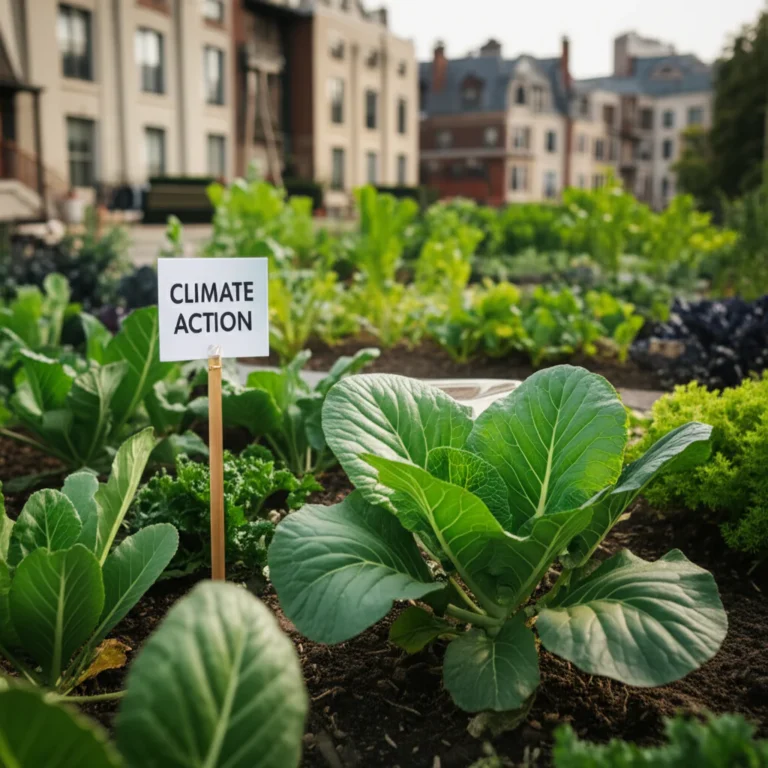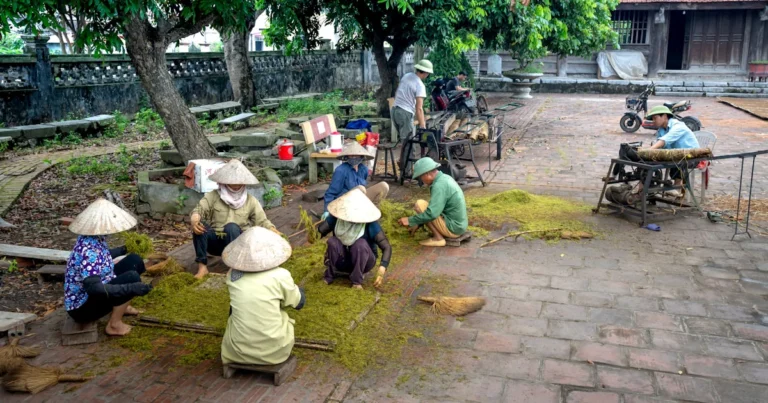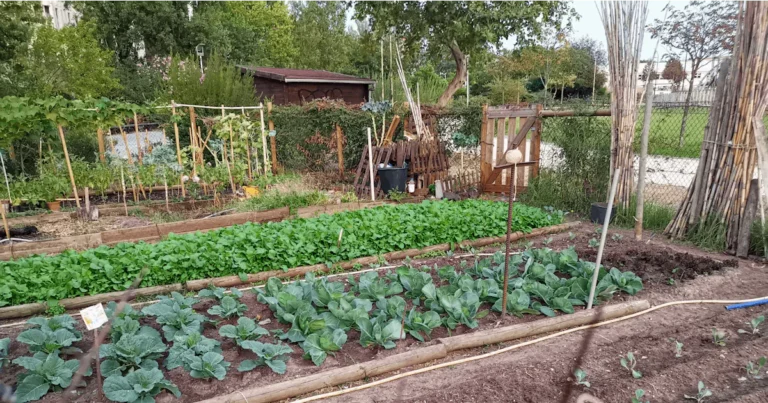Support our educational content for free when you purchase through links on our site. Learn more
Did you know that community gardens across the nation collectively produce millions of pounds of fresh produce annually? But the magic behind these vibrant green spaces isn’t just about fertile soil and dedicated volunteers; it’s about securing sustainable funding. This article unveils ten proven strategies to ensure your community garden thrives, from crafting compelling grant proposals to building strong community partnerships and exploring diverse funding streams. We’ll guide you through the process, sharing insights and real-world examples to help you cultivate a financially secure and flourishing garden. Ready to transform your funding strategy and unlock your garden’s full potential? Let’s dive in!
Key Takeaways
- Diversify your funding sources: Don’t rely solely on grants! Explore sponsorships, crowdfunding, community events, and membership fees for a resilient funding strategy.
- Craft compelling grant proposals: Showcase your garden’s impact and financial needs clearly and concisely. Highlight measurable outcomes and a strong team.
- Build strong partnerships: Collaborate with local businesses, organizations, and schools to expand your reach and resources. This synergistic approach strengthens your funding base.
- Develop a sustainable fundraising plan: Set realistic goals, diversify funding sources, track progress, and adapt your strategy as needed. This ensures long-term financial health.
- Effectively manage your garden’s finances: Maintain detailed records, create a budget, and seek professional advice when necessary. Transparency builds trust with funders.
Table of Contents
A Brief History of Sustainable Funding for Community Gardens
Why Sustainable Funding Matters: The Impact on Community Gardens
Securing Funding for Your Community Garden: A Step-by-Step Guide
- Crafting a Compelling Grant Proposal
- Building Strong Partnerships and Collaborations
- Exploring Diverse Funding Streams: Grants, Sponsorships, and More
- Developing a Sustainable Fundraising Plan: Long-Term Strategies
- Effectively Managing Your Garden’s Finances
- Measuring Your Impact and Demonstrating ROI
- Showcasing Your Success: Telling Your Story
- Navigating the Legal Landscape: Tax Implications and Compliance
- Overcoming Common Funding Challenges
- Celebrating Successes and Sharing Lessons Learned
Understanding Different Types of Funding for Community Gardens
Finding the Right Funding Sources for Your Needs
Top 10 Grant Opportunities for Community Gardens (and How to Apply)
Awards and Recognition for Outstanding Community Gardens
Essential Resources for Sustainable Community Garden Funding
Case Studies: Successful Community Garden Funding Initiatives
The Future of Sustainable Funding for Community Gardens
Quick Tips and Facts
Let’s get our hands dirty with some quick wins for securing sustainable funding for your community garden! Did you know that securing funding isn’t just about grants? It’s about building a strong, diverse funding strategy. Think of it like a well-balanced garden – you need a variety of plants to thrive!
- Diversify your funding sources: Don’t rely solely on grants. Explore sponsorships, crowdfunding, community events, and membership fees.
- Tell your story compellingly: Highlight the impact of your garden on the community. Numbers speak volumes! Show how many people you feed, educate, or engage.
- Build strong partnerships: Collaborate with local businesses, organizations, and schools to expand your reach and resources.
- Track your expenses meticulously: Keep detailed records of income and expenses. This is crucial for grant applications and demonstrating financial responsibility.
- Celebrate your successes: Share your achievements with potential funders and the community. Positive stories attract more support!
Want to learn how community gardens make money? Check out our comprehensive guide: How do community gardens make money?
A Brief History of Sustainable Funding for Community Gardens
Community gardens, while rooted in ancient practices, have seen a surge in popularity and, consequently, a need for diverse funding models in recent decades. Initially, many gardens relied heavily on volunteer labor and donations from passionate individuals. However, as the movement grew, so did the need for more structured and sustainable funding mechanisms. The rise of environmental awareness and the growing interest in local food systems have spurred increased funding from government agencies, foundations, and corporations. This shift has allowed community gardens to expand their reach and impact, addressing critical issues like food security and community development. We’ve seen firsthand how this evolution has empowered communities to create vibrant, productive green spaces.
Why Sustainable Funding Matters: The Impact on Community Gardens
Sustainable funding isn’t just about having enough money to buy seeds and tools; it’s about building a resilient and thriving community garden. Imagine a garden that can weather unexpected challenges, continue its vital work year after year, and even expand its impact. That’s the power of sustainable funding.
Here’s why it matters:
- Long-term viability: Consistent funding ensures the garden’s survival and allows for long-term planning and development.
- Program expansion: Sustainable funding allows gardens to offer more programs and services, such as educational workshops, youth programs, and community events.
- Improved infrastructure: It enables investment in better infrastructure, like raised beds, irrigation systems, and tools, leading to increased productivity and accessibility.
- Enhanced community engagement: A well-funded garden can attract more volunteers and participants, strengthening community bonds and fostering a sense of ownership.
- Increased food security: Sustainable funding helps gardens produce more food, addressing food insecurity in local communities.
Without sustainable funding, many community gardens struggle to survive, limiting their positive impact on the environment and the community. We’ve seen this firsthand – gardens that lack consistent funding often face setbacks, hindering their ability to achieve their full potential.
Securing Funding for Your Community Garden: A Step-by-Step Guide
Securing funding for your community garden can feel like a daunting task, but with a strategic approach, it’s entirely achievable! Think of it as cultivating a successful harvest – it requires planning, dedication, and the right tools. Here’s a step-by-step guide to help you on your journey:
1. Crafting a Compelling Grant Proposal
A strong grant proposal is your golden ticket to funding. It’s your chance to showcase your garden’s vision, impact, and financial needs. Think of it as a love letter to your garden, highlighting its unique qualities and potential. Here are some key elements:
- Clear and concise narrative: Tell your story in a way that resonates with the funder.
- Well-defined goals and objectives: Clearly state what you aim to achieve with the funding.
- Detailed budget: Provide a comprehensive breakdown of how you’ll use the funds.
- Measurable outcomes: Explain how you’ll track your progress and demonstrate your impact.
- Strong team: Highlight the expertise and experience of your team.
2. Building Strong Partnerships and Collaborations
Partnerships are essential for securing funding and expanding your garden’s reach. Think of it as creating a network of support that strengthens your garden’s foundation. Here’s how to build effective partnerships:
- Identify potential partners: Look for organizations with similar goals and values.
- Develop a mutually beneficial relationship: Offer something valuable in return for their support.
- Communicate effectively: Keep your partners informed of your progress and achievements.
3. Exploring Diverse Funding Streams: Grants, Sponsorships, and More
Don’t put all your eggs in one basket! Explore a variety of funding streams to create a resilient funding strategy. Here are some options:
- Grants: Seek funding from foundations, government agencies, and corporations.
- Sponsorships: Partner with local businesses to secure funding in exchange for promotional opportunities.
- Crowdfunding: Use online platforms to raise funds from a large number of individuals.
- Community events: Organize events like farmers’ markets, workshops, and festivals to generate revenue.
- Membership fees: Offer memberships to individuals and organizations who want to support your garden.
4. Developing a Sustainable Fundraising Plan: Long-Term Strategies
A sustainable fundraising plan is like a well-designed irrigation system – it provides consistent support for your garden’s growth. Here’s how to create one:
- Set realistic goals: Determine how much funding you need and how you’ll obtain it.
- Diversify your funding sources: Don’t rely solely on one source of funding.
- Develop a timeline: Establish a schedule for fundraising activities.
- Track your progress: Monitor your fundraising efforts and make adjustments as needed.
5. Effectively Managing Your Garden’s Finances
Financial management is crucial for the long-term health of your garden. Think of it as tending to the soil – proper care ensures healthy growth. Here’s how to manage your finances effectively:
- Develop a budget: Create a detailed budget that outlines your income and expenses.
- Track your income and expenses: Keep accurate records of all transactions.
- Seek professional advice: Consult with a financial advisor if needed.
6. Measuring Your Impact and Demonstrating ROI
Demonstrating your garden’s impact is crucial for securing future funding. Think of it as showcasing your harvest – the more impressive the results, the more likely you are to attract support. Here’s how to measure your impact:
- Collect data: Track key metrics, such as the amount of food produced, the number of volunteers, and the number of community members served.
- Develop a narrative: Tell the story of your garden’s impact in a compelling way.
- Use visuals: Use charts and graphs to illustrate your results.
7. Showcasing Your Success: Telling Your Story
Sharing your garden’s story is crucial for attracting support. Think of it as spreading seeds – the more you share, the more your garden will grow. Here’s how to tell your story:
- Develop a compelling narrative: Highlight the positive impact of your garden on the community.
- Use visuals: Use photos and videos to showcase your garden’s beauty and productivity.
- Share your story on social media: Use platforms like Facebook, Instagram, and Twitter to reach a wider audience.
8. Navigating the Legal Landscape: Tax Implications and Compliance
Understanding the legal and tax implications of running a community garden is essential for its long-term sustainability. Think of it as building a strong fence – it protects your garden from potential problems. Here’s what you need to know:
- Seek legal counsel: Consult with an attorney to ensure you’re complying with all relevant laws and regulations.
- Obtain necessary permits and licenses: Make sure you have all the necessary permits and licenses to operate your garden.
- Understand tax implications: Familiarize yourself with the tax implications of running a non-profit organization.
9. Overcoming Common Funding Challenges
Funding challenges are inevitable, but with a proactive approach, you can overcome them. Think of it as dealing with pests – early detection and effective strategies are key. Here are some common challenges and how to address them:
- Limited funding opportunities: Explore diverse funding streams and build strong partnerships.
- Competitive grant landscape: Develop a compelling grant proposal that highlights your garden’s unique value.
- Lack of financial literacy: Seek professional advice and develop strong financial management practices.
10. Celebrating Successes and Sharing Lessons Learned
Celebrating your successes and sharing lessons learned is crucial for continuous improvement. Think of it as harvesting your wisdom – it nourishes future growth. Here’s how to do it:
- Acknowledge achievements: Recognize the contributions of your team and volunteers.
- Share your story: Inspire others by sharing your successes and challenges.
- Learn from mistakes: Use setbacks as opportunities for growth.
Understanding Different Types of Funding for Community Gardens
Funding for community gardens comes in many forms, each with its own advantages and disadvantages. Understanding these different types is crucial for developing a comprehensive fundraising strategy. Think of it as choosing the right seeds for your garden – the right type will yield the best results.
- Grants: These are often the most sought-after funding source, but they can be highly competitive. They typically require detailed proposals and demonstrate a clear community impact.
- Sponsorships: Local businesses may sponsor your garden in exchange for advertising or recognition. This can be a great way to build community partnerships.
- Crowdfunding: Platforms like GoFundMe and Kickstarter allow you to raise funds from a large number of individuals. This requires a strong online presence and a compelling story.
- Donations: Individual donations can provide crucial support, especially from passionate community members. Regular outreach and transparent communication are key.
- Fundraising events: Organizing events like farmers’ markets, workshops, or festivals can generate revenue and build community engagement. Careful planning and execution are essential.
- Membership fees: Offering memberships to individuals or organizations can provide a steady stream of income. This requires a clear value proposition for members.
Finding the Right Funding Sources for Your Needs
Finding the right funding sources requires research and a clear understanding of your garden’s needs and goals. Think of it as selecting the right tools for your garden – the right tools make the job easier. Here’s how to find the right sources:
- Identify your funding needs: Determine how much funding you need and what you’ll use it for.
- Research potential funders: Explore various grant databases, foundation websites, and corporate social responsibility programs.
- Target your proposals: Tailor your proposals to the specific interests and priorities of each funder.
- Network with other community gardens: Learn from their experiences and share information about funding opportunities.
Top 10 Grant Opportunities for Community Gardens (and How to Apply)
While specific grant opportunities vary by location and time, here are ten general categories of grants that community gardens frequently apply for, along with tips on how to apply successfully:
| Grant Category | Description | Application Tips |
|---|---|---|
| Local Government Grants | Many municipalities offer grants for community projects, including gardens. | Check your local government’s website for grant opportunities. Highlight the community benefits of your garden in your application. Focus on local impact and alignment with the municipality’s priorities. |
| Foundation Grants | Private foundations often support community development initiatives, including gardens. | Research foundations that align with your garden’s mission. Submit a well-written proposal that clearly articulates your goals, budget, and impact. Demonstrate your garden’s sustainability and long-term viability. |
| Corporate Social Responsibility Grants | Many corporations have programs that support community projects. | Identify corporations with a commitment to environmental sustainability or community development. Develop a proposal that highlights the mutual benefits of a partnership. |
| Environmental Grants | Organizations focused on environmental protection often fund projects that promote biodiversity, sustainability, and environmental education. | Highlight the environmental benefits of your garden, such as habitat creation, water conservation, and carbon sequestration. Emphasize educational programs that promote environmental stewardship. |
| Food Security Grants | Organizations focused on food security often fund projects that increase access to healthy, affordable food. | Emphasize the role of your garden in addressing food insecurity in your community. Provide data on the amount of food produced and the number of people served. |
| Youth Development Grants | Many organizations support youth programs, including those that involve gardening and environmental education. | Highlight the educational and developmental benefits of your garden for young people. Describe programs that engage youth in gardening, environmental stewardship, and healthy eating habits. |
| Community Development Grants | Organizations focused on community development often fund projects that strengthen neighborhoods and improve quality of life. | Emphasize the community-building aspects of your garden. Highlight the social interaction, volunteer opportunities, and sense of community that your garden fosters. |
| Health and Wellness Grants | Organizations focused on health and wellness may fund projects that promote physical activity, healthy eating, and stress reduction. | Highlight the health benefits of gardening, such as physical activity, stress relief, and access to fresh produce. Emphasize programs that promote healthy lifestyles. |
| Agricultural Grants | Government agencies and organizations focused on agriculture may fund projects that promote sustainable agriculture practices. | Highlight the sustainable practices employed in your garden, such as composting, water conservation, and pest management. Demonstrate your commitment to environmentally friendly gardening techniques. |
| Educational Grants | Organizations focused on education may fund projects that provide educational opportunities related to gardening, environmental science, or nutrition. | Highlight educational programs offered by your garden, such as workshops, classes, and field trips. Emphasize the educational value of your garden for students and community members. |
Awards and Recognition for Outstanding Community Gardens
Awards and recognition can boost your garden’s profile, attract volunteers, and secure future funding. Think of it as winning a blue ribbon at a county fair – it brings prestige and recognition. Here are some ways to seek awards:
- Research local and national awards: Many organizations offer awards for outstanding community gardens.
- Prepare a strong application: Highlight your garden’s unique achievements and impact.
- Showcase your success: Share your accomplishments with potential funders and the community.
Essential Resources for Sustainable Community Garden Funding
Navigating the world of funding can be overwhelming. Here are some essential resources to help you on your way:
- Grant databases: These databases list grant opportunities from various funders. Examples include GrantWatch and Foundation Center.
- Foundation websites: Many foundations have websites that list their grant programs and application guidelines.
- Government websites: Government agencies often offer grants for community projects. Check your local, state, and federal government websites.
- Nonprofit organizations: Many nonprofit organizations offer resources and support for community gardens. Examples include the American Community Gardening Association and the National Gardening Association.
Case Studies: Successful Community Garden Funding Initiatives
Learning from others’ successes can inspire and guide your own fundraising efforts. Here are some examples of successful community garden funding initiatives:
- The Edible Schoolyard: This renowned project in Berkeley, California, secured funding through a combination of grants, donations, and fundraising events. Their success lies in their compelling narrative and strong community engagement.
- Brooklyn Grange: This rooftop farm in Brooklyn, New York, secured funding through a combination of grants, sponsorships, and sales of their produce. Their success lies in their innovative approach and strong business model.
- (Insert a local case study here): Highlight a successful community garden in your area and describe their funding strategies.
The Future of Sustainable Funding for Community Gardens
The future of community garden funding looks bright, but it requires continued innovation and collaboration. Here are some trends to watch:
- Increased focus on impact measurement: Funders are increasingly demanding evidence of a garden’s impact on the community.
- Growth of impact investing: Impact investors are increasingly interested in supporting community gardens that generate social and environmental returns.
- Rise of technology: Technology can play a significant role in fundraising, such as through crowdfunding platforms and online donation tools.
- Strengthening partnerships: Collaboration between community gardens, funders, and other stakeholders is essential for securing sustainable funding.
Conclusion
Securing sustainable funding for your community garden is a marathon, not a sprint. It requires careful planning, consistent effort, and a willingness to explore diverse funding streams. Remember, it’s not just about the money; it’s about building a strong, resilient community around your garden. By diversifying your funding sources, telling your story compellingly, and building strong partnerships, you can create a garden that thrives for years to come. We’ve shared our expertise and experiences to guide you, and we encourage you to embrace the journey, celebrate your successes, and learn from any setbacks. The rewards of a thriving community garden are immeasurable – a testament to the power of collaborative effort and sustainable practices. Now go forth and cultivate your funding strategy!
Recommended Links
Looking for resources to help you on your funding journey? Here are some helpful links:
Books on Amazon:
- Funding Your Nonprofit: A Step-by-Step Guide
- The Grantseeker’s Guide: How to Write Successful Grant Proposals
FAQ
What are the most effective ways to secure grants for community garden projects?
Securing grants requires a multifaceted approach. First, thoroughly research grant opportunities that align with your garden’s mission and goals. Utilize online grant databases like GrantWatch and Foundation Center. Second, craft a compelling grant proposal that clearly articulates your garden’s vision, impact, and budget. Highlight your garden’s unique strengths and demonstrate a clear understanding of the funder’s priorities. Third, build strong relationships with potential funders. Attend networking events, connect with grant officers, and follow up on your applications. Finally, demonstrate your garden’s impact through data collection and storytelling. Quantify your achievements and showcase your garden’s positive influence on the community.
How can community gardens generate revenue through fundraising events and activities?
Fundraising events can be a fantastic way to generate revenue and build community engagement. Consider organizing events like farmers’ markets, where you can sell your garden’s produce and other goods. Workshops and classes on gardening techniques, cooking with fresh produce, or related topics can attract participants and generate income. Festivals and community gatherings can create a fun atmosphere while raising funds through ticket sales, food stalls, and merchandise. Partnering with local businesses for sponsored events can also provide additional revenue streams. Remember to promote your events effectively through social media, local newspapers, and community newsletters.
What role can crowdfunding play in supporting the development of sustainable community gardens?
Crowdfunding platforms like GoFundMe and Kickstarter can be powerful tools for raising funds, especially for smaller projects or initial startup costs. A compelling story is key to successful crowdfunding. Highlight the impact of your garden on the community and the benefits of supporting your project. Use high-quality visuals to showcase your garden and its potential. Engage your community by sharing updates and thanking your donors. Consider offering rewards to donors at different levels to incentivize participation. Crowdfunding can also help build community support and awareness for your garden.
Are there any government programs or tax incentives available to support community garden initiatives and promote urban agriculture?
Many government programs and tax incentives exist to support community gardens and urban agriculture. These vary by location, so it’s essential to research programs at the local, state, and federal levels. Some programs may offer direct grants or funding for infrastructure development. Others may provide tax breaks or incentives for land use or donations. Contact your local government agencies and agricultural extension offices to learn about available programs in your area. The USDA also offers various programs to support urban agriculture. Check their website for details.
How can community gardens ensure long-term financial sustainability?
Long-term financial sustainability requires a multi-pronged approach. Diversify your funding sources by combining grants, sponsorships, fundraising events, and membership fees. Develop a robust budget and track your income and expenses meticulously. Build strong partnerships with local businesses and organizations to secure ongoing support. Demonstrate the impact of your garden through data collection and storytelling to attract future funding. Consider developing a business model that generates revenue through the sale of produce, workshops, or other services. Finally, cultivate a strong community base of volunteers and supporters who are invested in the garden’s long-term success.
Reference Links
- American Community Gardening Association
- National Gardening Association
- GrantWatch
- Foundation Center (Note: This link may redirect to Candid)
- USDA – People’s Garden Initiative
- National Fish and Wildlife Foundation





